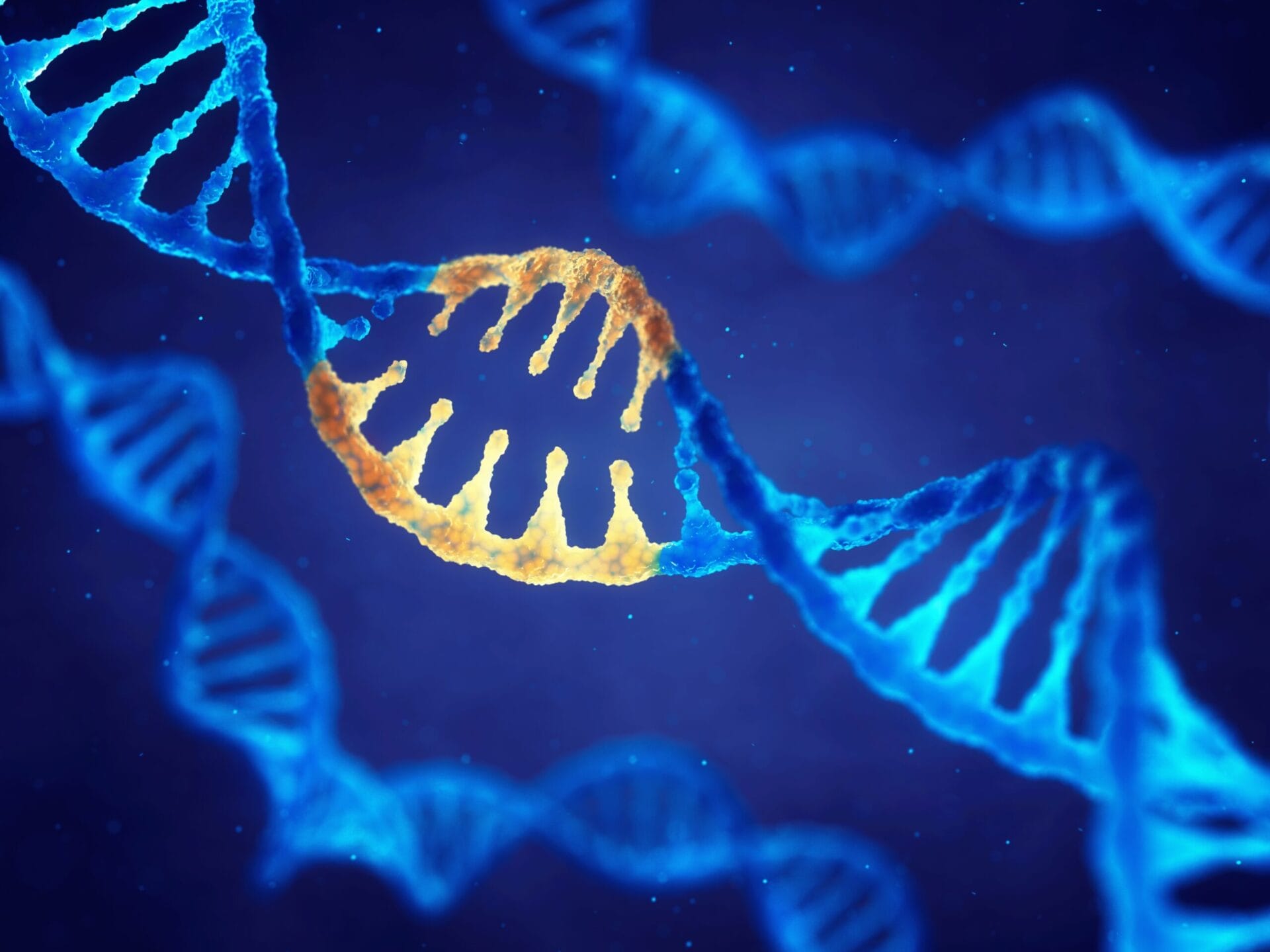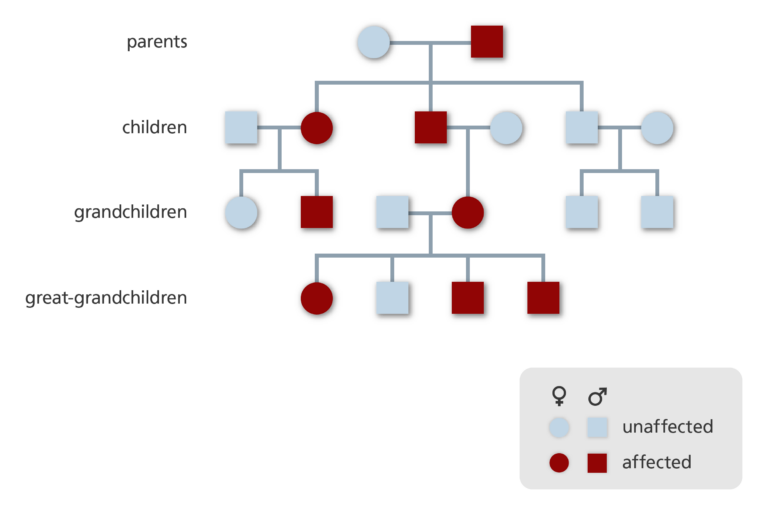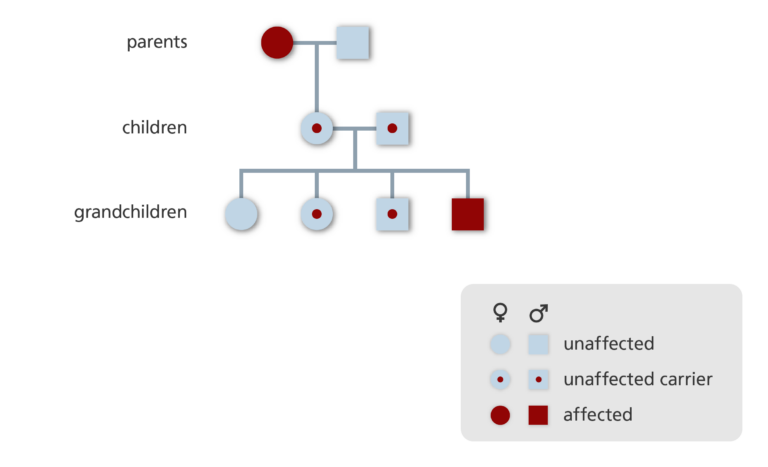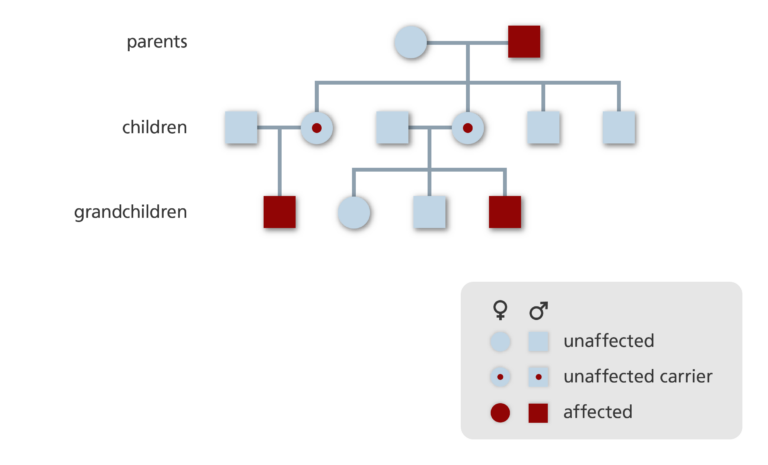What are single gene disorders?
Image credit: Shutterstock

Single gene disorders are caused by DNA changes in one particular gene, and often have predictable inheritance patterns.
- Over 10,000 human disorders are caused by a change, known as a mutation, in a single gene. These are known as single gene disorders.
- Individually, single gene disorders are each very rare, but as a whole, they affect about one per cent of the population.
What is a single gene disorder?
- A single gene disorder is a condition caused by a change, or mutation, in a single gene.
- The mutated version of the gene responsible for the disorder is known as a mutant, or disease, allele.
- Individually, single gene disorders are each very rare, but as a whole, they affect about one per cent of the population.
- Since only a single gene is involved, these disorders can be easily tracked through families and the risk of them occurring in later generations can be predicted.
- A pedigree diagram can be used to show how different genetic characteristics are inherited within a family.
What is a pedigree diagram?
- A pedigree diagram can be used to show how different genetic characteristics are inherited within a family.
- They can be used to help predict the likelihood of someone in a family developing a particular disease.
- All the family members are mapped onto a family tree (females are represented by circles and males by squares), each row is a new generation (first at the top, last at the bottom).
- Those individuals with the genetic disease are shaded in, those without are unshaded.
- People who are carriers (carry one copy of the disease-related gene, but do not have the full disorder) are represented by a coloured spot.
- Parents of a child are connected by a single, horizontal line. If the parents of a child are related (for example, cousins) they are connected by a double line.
Types of single gene disorders
Single gene disorders can be divided into different categories: dominant, recessive and X-linked.
Dominant diseases
- Dominant diseases are single gene disorders that occur in the heterozygous state – when an individual has one mutant copy of the relevant gene and one healthy copy.
- The effects of the mutant version of the gene (allele) override the effects of the healthy version of the gene. So, the mutant allele causes disease symptoms even though a healthy allele is present.
- Dominant disorders tend to crop up in every generation of an affected family because everyone carrying a dominant mutant allele shows the symptoms of the disease.
- Dominant disorders spread vertically down family trees, from parent to child.
- In rare cases when an individual has two copies of the mutant gene (also known as being homozygous) the disorder symptoms are generally more severe.
- An example of a dominant single gene disorder is Huntington’s disease, which is a disease of the nervous system.

Recessive diseases
- Recessive diseases are single gene disorders that only occur in the homozygous state - when an individual carries two mutant versions (alleles) of the relevant gene.
- The effects of the healthy allele can compensate for the effects of the mutant allele. The mutant allele does not cause disease symptoms when a healthy allele is also present. However, if a parent inherits two mutant alleles, there are no healthy alleles, so the mutant allele can exert its effect.
- As shown in the diagram below, affected individuals arise when both of their parents carry a single mutated allele and each pass on that mutated copy to the child so the child then has two mutated copies. In this diagram, the mother of the affected grandson has inherited a mutated copy from the grandmother, and the father has inherited a mutated copy from his family.
- Recessive diseases are more difficult to trace through family trees because carriers of a mutant allele do not show symptoms of the disease. It therefore appears that the disease has skipped a generation when it is seen in groups of children within a family.
- The risk of an individual having a recessive disorder increases when two people who are closely related have a child together (consanguinity). This is because there is a much greater chance that the same mutant allele will be present in related parents.

X-linked disorders
- X-linked disorders are single gene disorders that result from the presence of a mutated gene on the X chromosome.
- Because females (XX) have two copies of the X chromosome but males (XY) only have one copy, X-linked disorders are more common in males. If a male’s single copy on the X chromosome is mutated he has no healthy copy to restore healthy function.
- The inheritance patterns of X-linked diseases are simplified by the fact that males always pass their X chromosome to their daughters but never to their sons.
- Like other single gene disorders, X-linked disorders can be either recessive or dominant.
X-linked recessive diseases
- Examples of X-linked recessive disorders include red-green colour blindness, haemophilia and the Duchenne and Becker forms of muscular dystrophy.
- X-linked recessive disorders are much more common in males than females because two copies of the mutant allele are required for the disorder to occur in females, while only one copy is required in males.
- The overall pattern of the disease is characterised by the transmission of the disease from a carrier mother, who inherited a copy of the mutant gene from her affected father (this is sometimes described as a ‘knight’s move’).

- Males with XY chromosomes always pass their X chromosome to their daughters but never their sons (who receive their Y chromosome). These daughters are described as obligate carriers. They generally show no disease symptoms as they have one copy of the mutant gene but also one copy of the healthy gene.

- Female carriers pass their X chromosome with the disease associated mutation to half of their daughters (who are carriers) and half of their sons (who will be affected by the disease). Their other children will inherit the healthy copy of the gene.

- Carrier females may show disease symptoms if there is a chromosome disorder or a problem with X chromosome inactivation.
X-linked dominant disorders
- X-linked dominant disorders are very uncommon. Examples include Rett syndrome (a condition found almost exclusively in girls that seriously affects brain development, causing severe disabilities) and some inherited forms of rickets (slowed growth and skeletal development due to vitamin D deficiency).
- Unlike X-linked recessive disorders, the frequency of X-linked dominant disorder is similar in males and females.
- Unlike other dominant diseases, X-linked dominant disorders cannot be transmitted from father to son because fathers do not pass their X chromosome to their sons.